Hoka One One Challenger ATR 5
Stated Heel-to-Toe Drop: 5.0 mm
Stack Height: 31 mm (heel), 26 mm (forefoot)
Stated Features:
- Dual-layer mesh balances support, durability and breathability
- Textured TPU toe reinforcement for added durability
- Internal heel counter provides support on all terrains
- Early stage Meta-Rocker for a smooth ride
- Lightweight and oversized EVA midsole provides signature HOKA ONE ONE® cushioning
- CMEVA foam midsole provides stable footing and absorbs impact points
- 4mm lugs provide all-terrain traction
- Podular outsole design provides stability on uneven terrain
- 100% Vegan
MSRP: $130.00
Size Tested: US Women’s size 8
Stated Weight Per Shoe (US Women’s size 7): 218 grams
Blister Measured Weight Per Shoe (US Women’s Size 8): 238.5 & 238.5 grams
Reviewer: 5’9, 115 lbs
Test Locations: Gunnison-Crested Butte Valley & Boulder, CO; Tahoe Rim Trail 100, NV
Test Duration: ~300 miles

Intro
With the Challenger ATR, Hoka One One took the iconic design of their maximalist, road-oriented Clifton and made a few modifications to make it a shoe capable of handling runs on and off of pavement. The Challenger ATR was designed with versatility in mind; with smaller lugs and the modestly rockered midsole geometry, this shoe is meant to seamlessly travel from road to trail.

During my training for the Tahoe Rim Trail Endurance Run 100, I spent many miles in the newest model, the Challenger ATR 5, on a wide variety of terrain. This shoe quickly became one of my favorites in the Hoka lineup for easy runs and longer days on my feet, ultimately becoming my pick for the last 50 miles of the 100-mile race in Lake Tahoe. Here’s my take on its general performance, and how it compares to other options in this category.
Fit
As with any running shoe, we highly recommend trying on the Challenger ATR 5 before buying, if possible. That said, I can talk about how the Challenger ATR 5 fits my feet. For reference, I have large bunions and due to the shape of my pinky toes, they often get large blisters during long events. I look for shoes that give my toes enough room but still hug my otherwise-narrow feet. I tend to prefer shoes with a heel-to-toe drop ranging from 5-9 mm.
The Challenger ATR 5 fits similarly to many of the other Hoka shoes I’ve used, and most closely to the Clifton on which the Challenger ATR 5 is based. The Challenger ATR 5 wider toe box allows room for my toes while the dual-layer mesh of the midfoot helps to hold my foot snugly in place. These shoes have a much more spacious toe box than the Hoka Speedgoat 3, which I found to be a perk (more on that later).
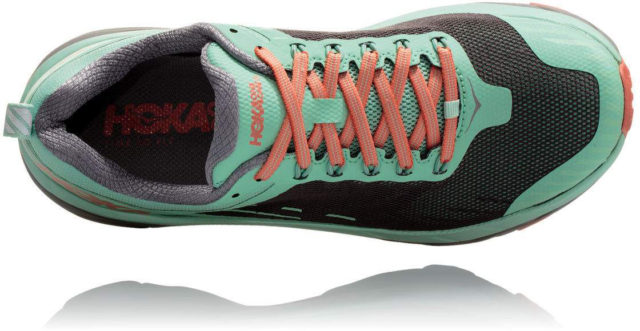
The heel cup on the Challenger ATR 5 really helps when it comes to foot security. With the Challenger ATR 5’s high stack height, I was concerned at first about feeling like I was running on stilts. But thanks to the internal heel counter, my heel and foot felt stable in the shoe. I had no issues with slippage during climbs or descents. Even though this shoe has a high heel counter, I had no issues with it being too stiff or digging into my heel.
The midfoot on the shoe fit me well; since I have a very narrow foot with a relatively low arch, I cranked down the laces to ensure that my foot was locked into place. For those with a higher-volume foot, the shoe should fit comfortably without needing to cinch down the laces as much.
Drop
The Challenger ATR 5 has a 5.0 mm heel-to-toe drop, putting it around the middle of the spectrum. I tend to like shoes with a slightly higher drop, but with the Challenger ATR 5’s high stack height, its drop felt just about perfect. Hoka did not change the drop from the previous Challenger ATR 4.
Weight (and Comparisons)
With a measured weight of 238.5 grams per shoe for a US Women’s size 8, this shoe feels super light, especially when you consider the amount of cushion it offers. While running in the Challenger ATR 5, I didn’t really feel like I was wearing some bulky, maximally-cushioned shoe. For reference, here are the stated weights of several models that Hoka produces in this category, all for a US Women’s size 7:
218 g / 7.7 oz — Hoka Challenger ATR 5
240 g / 8.5 oz — Hoka Evo Mafate
258 g / 9.1 oz — Hoka Speedgoat 3
280 g / 9.9 oz — Hoka Stinson ATR 5
Upper
The upper of the Challenger ATR 5 uses a dual-layer mesh, which is designed to provide durability, support, and breathability. The toe-piece of the upper also has reinforcement for added longevity. Overall, I think the Challenger ATR 5’s upper does a great job of balancing different traits. My foot never got too hot in it thanks to the mesh paneling and even though I stumbled and tripped a lot during the 50 miles at the Tahoe Rim Trail 100, the shoes show no signs of wear in the upper.

The Challenger ATR 5 felt much more breathable than many other shoes I have ran in. Compared to the Hoka Speedgoat 3, this shoe felt far more breathable. I have also taken the Challenger ATR 5 through several river crossings and deep mud in the trail and the breathable, fairly open-knit upper allows these shoes to dry quickly, helping to avoid blisters / rubbing.
Around the midfoot, the Challenger ATR 5’s upper has additional support to help hold your foot in place. This added support felt snug (even on my narrower feet) and helped to counteract the potential instability of the shoe’s larger toe box. The midfoot did not feel too tight on my foot, and it felt like it offered more room than the Speedgoat 3. I have a very low-volume foot and with a bit of extra tightening of the laces, I had no issues with the upper being too loose around my foot.
Midsole and Cushioning
With a 26 mm stack height in the forefoot, the Challenger ATR 5 definitely sits on the “more cushioned” end of the spectrum. Consequently, I was fully anticipating this shoe to feel clunky. But as I mentioned above, the Challenger ATR 5 is also quite light for its size, and it felt much more nimble than I expected. I think the Challenger ATR 5’s cushioning does a good job of giving your legs a break without weighing you down.
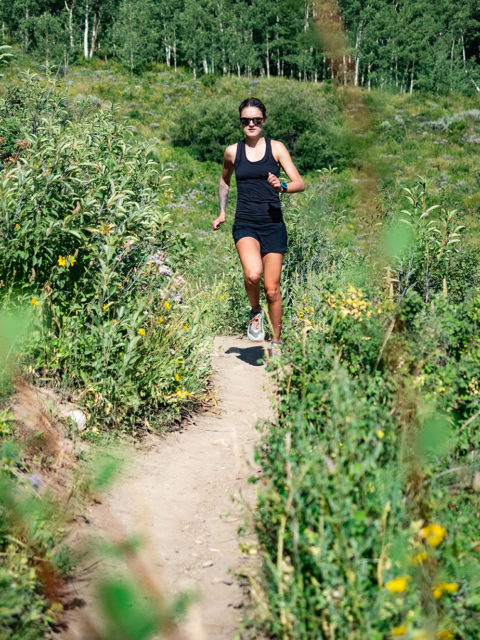
The Challenger ATR 5 packages a thick EVA-foam midsole into a pretty oversized package with a very big footprint, designed to provide a smooth ride on less technical trails or roads. Despite being targeting at less technical trails, I felt that this oversized footprint boosted my confidence on a lot of different trails.
Compared to the Speedgoat 3, which has a smaller footprint and a narrower last, I felt less like my ankle was going to topple over and role. The Challenger ATR 5 also felt a bit more agile and light on my feet, letting me move more swiftly between roots, rocks, and smooth trail. This sensation was in part thanks to the Challenger ATR 5’s lower weight, but also due to the confidence that the larger footprint provided.
The Challenger ATR 5 midsole is fairly soft, which I thought blended well with the rest of its design. This shoe is far less stiff than the Speedgoat 3, which I felt was quite stiff both longitudinal and laterally. The Challenger ATR 5 was move forgiving and flexible in its longitudinal flex than it was in terms of side-to-side flexibility. This helped the shoe feel pretty soft and forgiving while both ascending and descending, but on technical terrain, the shoe felt stable laterally.

I’ve also done some running in the Challenger ATR 5 on a paved bike path to link trails and the shoes never felt too grabby or slow, but did lack the same rebound it provided on the trails. Given that I was also happy with them on pretty technical trails, I think that makes the Challenger ATR 5 one of the more versatile shoes I’ve used.
As I mentioned, I wore the Challenger ATR 5 during the last 50 miles of the Tahoe Rim Trail 100, which I think was one of the better choices I made all day. The cushioning felt ideal for my already tired legs and kept me moving efficiently during the last long descent to the finish line. I would use these shoes again in a heartbeat for long ultra-marathons.
In terms of rebound / energy, I’d call the Challenger ATR 5’s midsole pretty average — neither dead, nor exceptionally bouncy / energetic.
Outsole
I have been very pleased with the outsole of the Challenger ATR 5. The 4 mm lugs helped me feel confident on more technical terrain while their shorter size and the EVA foam section in the middle still allowed me to move without excessive drag on concrete or flat dirt paths. The Podular outsole design and wide footprint, combined with the moderate lugs, helped my feet feel stable on uneven trails, such as the Farris Creek Trail near Crested Butte South or the rock garden in Upper Loop Trail in Crested Butte.

Compared to some of my other go-to trail shoes, the Challenger ATR 5 provided very good grip on a variety of surfaces. The shoe excelled on packed dirt, roots, and rocky terrain. I felt less confident in the grip on wet rock and slick mud. Overall, the Challenger ATR 5’s traction felt similar to a few of the shoes in my regular rotation, including the Salomon Sense Ride 2 and the Adidas Terrex Agravic Flow.
On muddy trails, the ATR may slide a bit due to its shorter lugs. If you are looking for a shoe to use in a lot of wet, muddy conditions, I’d recommend checking out shoes with more aggressive outsoles and longer lugs (e.g., Hoka Speedgoat 3).
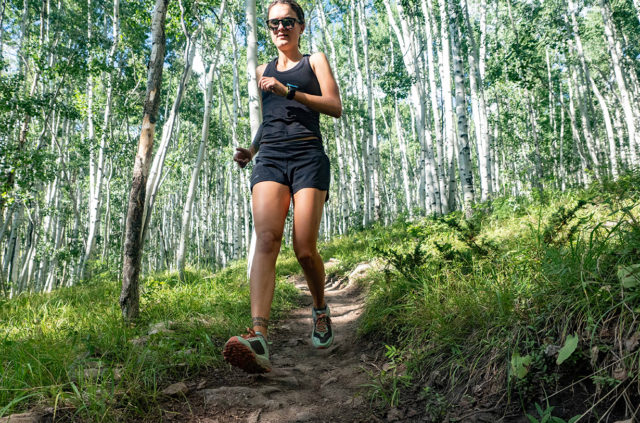
After over 300 miles of running in this shoe, I have been very pleased with how it is wearing. The outsole shows a bit of wear and is beginning to fray a bit in a few of the spots where the outsole “pods” meet, but overall is holding up well. I would argue that the ATR is wearing better than my Speedgoat 3.
On The Trail
I have been using the Challenger ATR 5 mostly in the Gunnison-Crested Butte Valley, which hosts a variety of smooth and rocky singletrack, technical 4WD roads, and flat gravel paths. I’ve also worn these in Boulder, Colorado on the steep rocky trails around town, and wore them during the last half of the Tahoe Rim Trail 100 on the dusty, rocky course around the lake. Overall, I’ve been very impressed by the versatility of this shoe across this broad spectrum of terrain and distances.
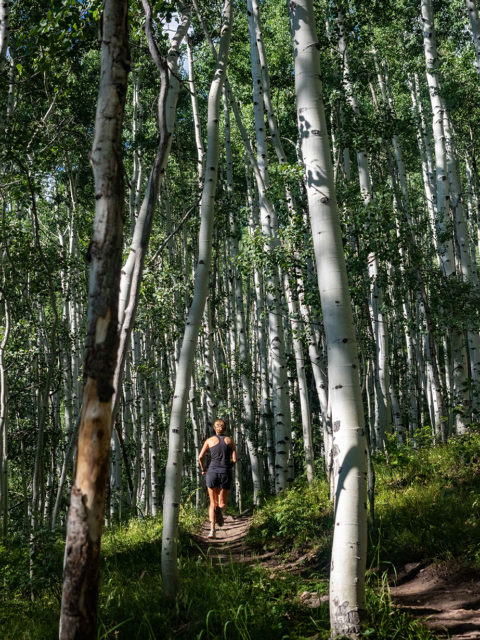
The Challenger ATR 5 performs well on a huge variety of terrain. I felt secure and confident in it during the rocky descent off Mount Sanitas in Boulder. I did not question the shoe’s ability to grip on the rooty trails ascending Mount Crested Butte, and my legs felt smooth and comfortable as I ran up the dirt road of Cement Creek. During the TRT100, I was able to run comfortably without major foot or leg issues. Because of the design of the midsole and outsole, this shoe travels well across the spectrum of trail conditions.
These shoes became my go-to on slower runs. I would not select these for a workout or when I feel like running faster for less time. They are light and pretty efficient for their size, but I tend to prefer shoes with less cushion and a quicker feel for uptempo running. The Challenger ATR 5 also falls short when it comes to producing the same rebound on cement as they do on dirt, but that could be said of most maximal trail shoes. Lastly, I have heard complaints from others that the longitudinal softness of the Challenger ATR 5 decreases their confidence on technical trails, but I personally haven’t had an issue with this. If anything, I think this is just another example of why we highly recommend trying on shoes before buying, as everyone’s preferences differ when it comes to fit, cushioning, and overall feel.
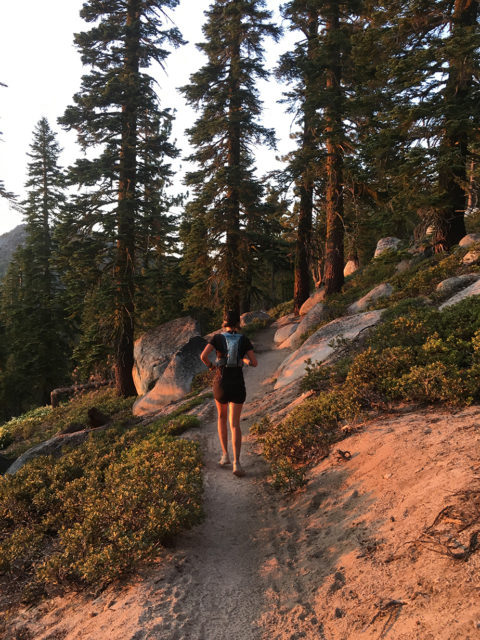
In sum, the Challenger ATR 5 is very versatile. It’s not the most precise shoe (no shoe that’s this heavily cushioned is), nor is it as efficient as a road shoe on paved roads (just like most trail-oriented shoes). But given its more maximalist design, I think the Challenger ATR 5 does a great job of balancing performance across a wide range of terrain, and provides ample cushioning throughout.
Durability
With about 300 miles on the Challenger ATR 5, I am impressed with how they are holding up. As I mentioned in the Outsole section, there is a bit of general wear on the outsole from the accumulated miles, but nothing out of the ordinary.
As for the upper, it is barely showing wear, despite running in the shoes in a lot of dusty, rocky, and wet terrain. The upper has stretched a bit over time, but not enough that I cannot still get the shoe to fit snugly around my foot. The midsole feels essentially the same as when I pulled it out of the box with very minimal compaction. Overall, this shoe is wearing very well.
Who’s It For?
If you are in the market for a plush shoe that is ideal for a wide variety of terrain (from roads to trails), the Challenger ATR 5 is a great option. It is a provides a smooth, well-cushioned ride on trails ranging from crushed gravel paths to steep and rocky and is a solid choice for long ultra-marathons. Having run 50 consecutive miles in them, I think I could have worn them for the whole 100 miles and had little to no issues with my feet.
If you are searching for a more minimal shoe, the Challenger ATR 5 is obviously not a great option — there are plenty of lower-profile shoes that are lighter and more precise. And while the Challenger ATR 5 has a lot of cushioning, it’s not the “most” cushioned shoes that Hoka makes, so if you want even more cushioning, you can check out the Speedgoat 3 and Stinson ATR.
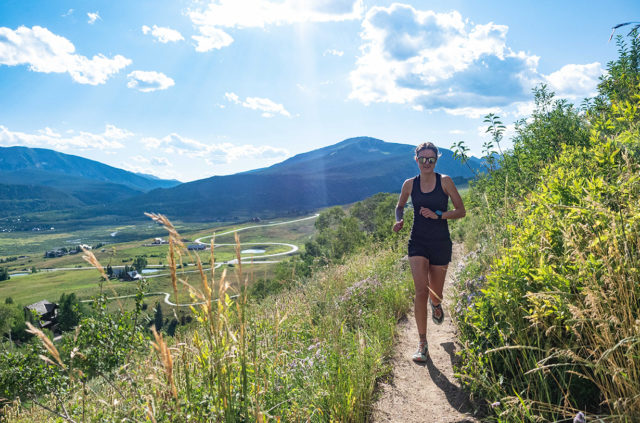
But for those looking for a plush-yet-lightweight ride, the Challenger ATR 5 is worth a good look. And if you have run in the Hoka Speedgoat 2 or 3 and disliked the stiffness or the “topple over feeling” those narrower shoes can create, the Challenger ATR 5 would be well worth trying.
Overall, if you need some lightweight cushion in your running life, especially if you run on a wide variety of terrain (including some roads), this is a great shoe. I think for a lot of people, the cushioning, low weight, and versatility of the Challenger ATR 5 makes it a compelling option.
Bottom Line
Of the Hoka shoes that have spent time on my feet, I can confidently say that the Challenger ATR 5 is my favorite model yet. The shoe is light and agile for its size, but with enough cushion to help me cover the miles comfortably.
The Challenger ATR 5 is not my first pick for fast, uptempo running, but I think this shoe is ideal for easy (or long) days on the trail. While it has a lot of cushioning and a rather high stack height, this shoe still manages to feel light and responsive. It is not the most energetic shoe, but it is also not flat / dead.
The Challenger ATR 5 handles well on most terrain. I loved this shoe on smooth, runnable singletrack or dirt roads, but also felt confident on technical and steep trails. The internal heel counter helps keep my foot locked down and for me, eliminated the unstable feeling I often get from the high stack of Hoka’s shoes. If you are in the market for a softer shoe with plenty of cushioning that still feels light underfoot, the Challenger ATR 5 is a great shoe to check out.

Thank you so much for this review, I think you helped me a lot with wondering, should I choose Challenger ATR5 or Clifton 6/7.
Would be very interested in how they compare to the Torrent 2 and their own review:)
So would you go a size bigger than your normal fit or just stick to your normal size